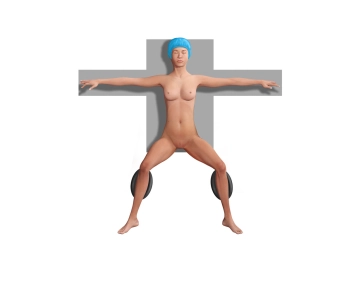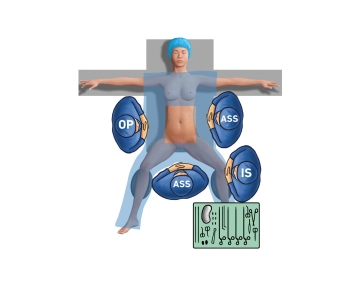Postoperative Analgesia:
Follow the link here to PROSPECT (Procedures Specific Postoperative Pain Management)
Follow the link here to the current guideline Treatment of acute perioperative and post-traumatic pain.
Medical Follow-up:
Early removal of intraoperatively placed drains. Regular wound checks, if not absorbable – removal of skin sutures around the 12th postoperative day.
In case of recurrent vomiting, insertion of a nasogastric tube for decompression of the gastrointestinal tract and aspiration prophylaxis.
7 days after inadequate food intake, parenteral caloric nutrition with 25-30 kcal/kg body weight (Protein:Fat:Carbohydrates – 20:30:50) should be started.
Follow-up: In stages II and III, regular follow-up examinations are indicated. In UICC Stage I, colonoscopies are sufficient as follow-up to detect secondary tumors.
Thrombosis Prophylaxis:
In the absence of contraindications, due to the high risk of thromboembolism, low molecular weight heparin should be used in prophylactic, possibly disposition risk-adapted dosing, in addition to physical measures. Note: Renal function, HIT II (history, platelet monitoring). Follow the link here to the current guideline Prophylaxis of venous thromboembolism (VTE).
Mobilization:
Immediate mobilization is aimed for, on the evening of the day of surgery, at the latest on the morning of the following day.
Physical Therapy:
No specific physical therapy required, possibly support for patients with, e.g., pulmonary impairment.
Dietary Progression:
The nasogastric tube should be removed on the day of surgery, and the patient can drink on the same day post-surgery. In most clinics, it is customary to provide easily digestible food on the 1st postoperative day, such as soups. On the 2nd and 3rd days, a quick progression to solid food is possible, initially given in relatively small portions.
Bowel Regulation:
Physiologically, a postoperative ileus occurs after left-sided open hemicolectomy, lasting about 2–3 days. From this point, the bowel can be stimulated with various medications.
From the 3rd-4th postoperative day, if no spontaneous bowel movement has occurred by then, administration of an oral laxative. In case of bowel paralysis, 3×1 mg Neostigmine (slowly over about 2 hours; CAVE off-label use) and 3 x 10 mg Metoclopramide each as KI i.v..
Incapacity for Work:
Individually depending on the surgical indication (underlying disease) and the profession practiced, between 4 and 6 weeks; not foreseeable in advanced tumors.


